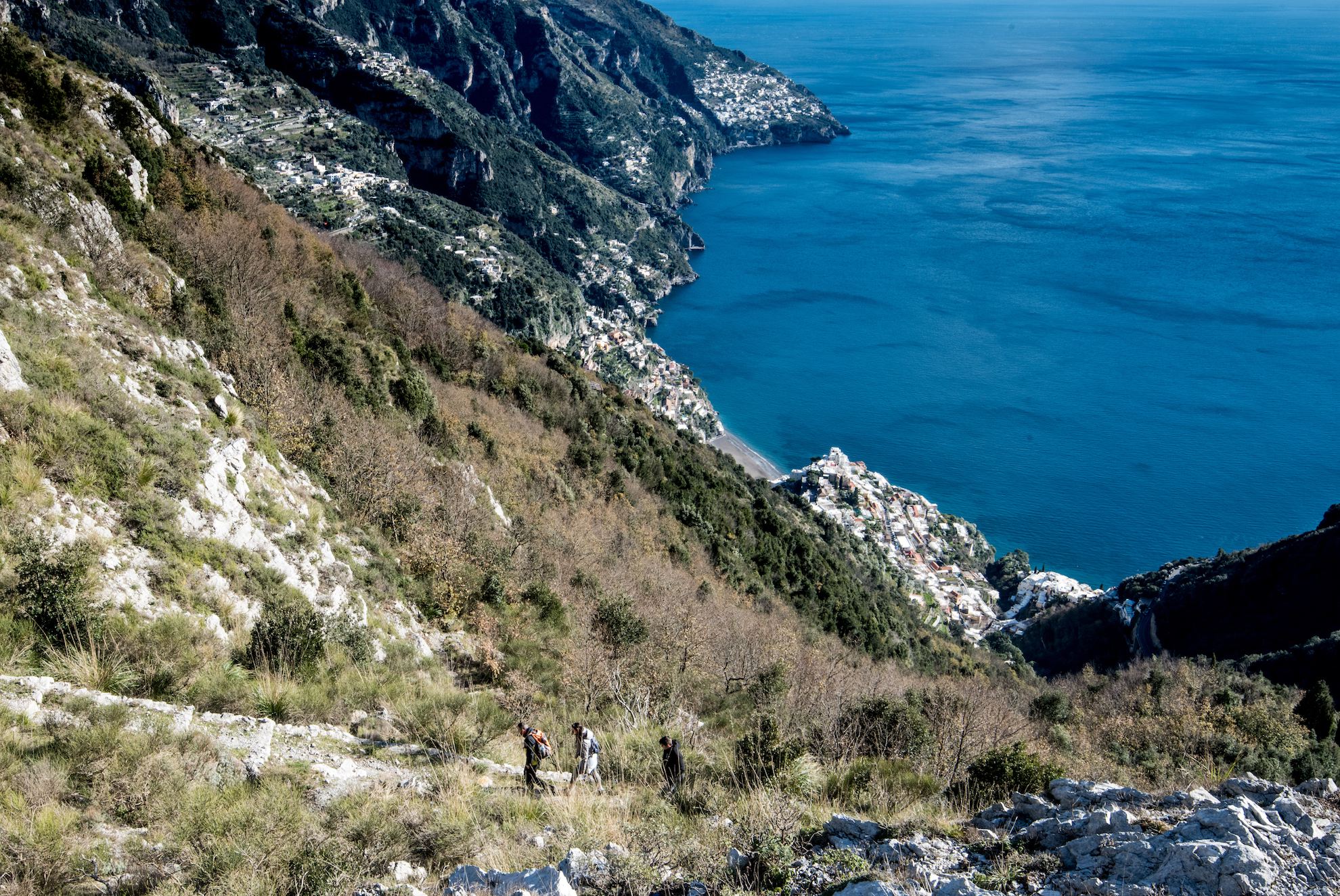Starting from Vico Equense a myriad of paths wind along the Sorrento Peninsula. Together with a few friends we go to Santa Maria del Castello, a hamlet located on a spur of rock about 700 meters high.
Ph. Gianluigi Di Maio - Trentaremi

A historical district since the seventeenth century, when the population of the plain took refuge up here to escape the plagues. Our journey starts from the mother church, towards Le Tese. This hidden mule track along the Amalfi coast represents the oldest connection between the villages of Vico Equense and Positano. A fundamental alternative to that long journey which was instead the circumnavigation of the Sorrento Peninsula.
Almost completely unknown to hikers, the route belongs to the locals, whose great-grandparents created a dense commercial network. Especially during the two world wars, it was based on the exchange between the dairy products of Vico and the fish of the Amalfi countries. A market that also expanded to products such as salt, wedding supplies and cigarettes. Wine and coal, however, were produced halfway right on Le Tese.
Ph. Gianluigi Di Maio - Trentaremi

The route is pending, as can be seen from the name. It is divided between narrow turnways, cobbles and steps, up to the Corvo district, the highest of Positano. Along the way, we meet a farmer holding a straw basket full of freshly picked lemons in one hand. With the other he holds a stick with a bundle on his shoulder. He plods on, but is in perfect balance despite the age. He sits on a wall, sighs and admires the beauty in front of him: the view goes from Praiano to the Li Galli archipelago.
Ph. Gianluigi Di Maio - Trentaremi

We are on a natural balcony overlooking Positano. It seems to float on the majolica domes and on the white houses that with a merry-go-round on the rock give life to the queen of the Amalfi Coast. A really nice location to have breakfast. Then, the farmer opens that mysterious bundle and, like a magician who brings a rabbit out of a hat, reveals his fresh treasure: a small provolone, half a Neapolitan salami, freshly baked bread and eggs of the day, wrapped in a sheet of newspaper.
He takes a knife and cuts some slices of cheese, then offers us an egg: «Tell me if in yur life you have ever tasted a better one. This is not like the junk food sold in the city ... I took it this morning in my chicken coop». We reciprocate his kindness by tasting the egg as if it were a glass of wine. «Isn't it a delight?» He asks curiously. We confirm with a smile. This is enough to be invited to his rural banquet.
Ph. Gianluigi Di Maio - Trentaremi

«I walk this path every day - he says - The climb is tiring, but I'm lucky because I live in the most beautiful place in the world. I walk and look at a panorama that always excites me». Can you blame him? We are in a countryside overlooking the sea. The colors of the Mediterranean maquis are bright and plunge into the blue sea. A breath of wind is enough to free the fragrances of myrtle, mastic, saffron and rosemary. A riot of floral aromas and aromatic herbs stained only by the rare “passages” of some mules or goats that have moved away from the flock.
Ph. Gianluigi Di Maio - Trentaremi

Once refreshed, before resuming the walk, the farmer takes a lemon from the basket, cuts it into pieces and suggests that we eat it with the peel in front of this breathtaking view. At the first bite, the panorama takes on the flavor of citrus: fresh and joyful, decisive but delicate. The same sensation that you feel on Le Tese, a relaxing trek that fits into a cheerful landscape with dizzying views.

